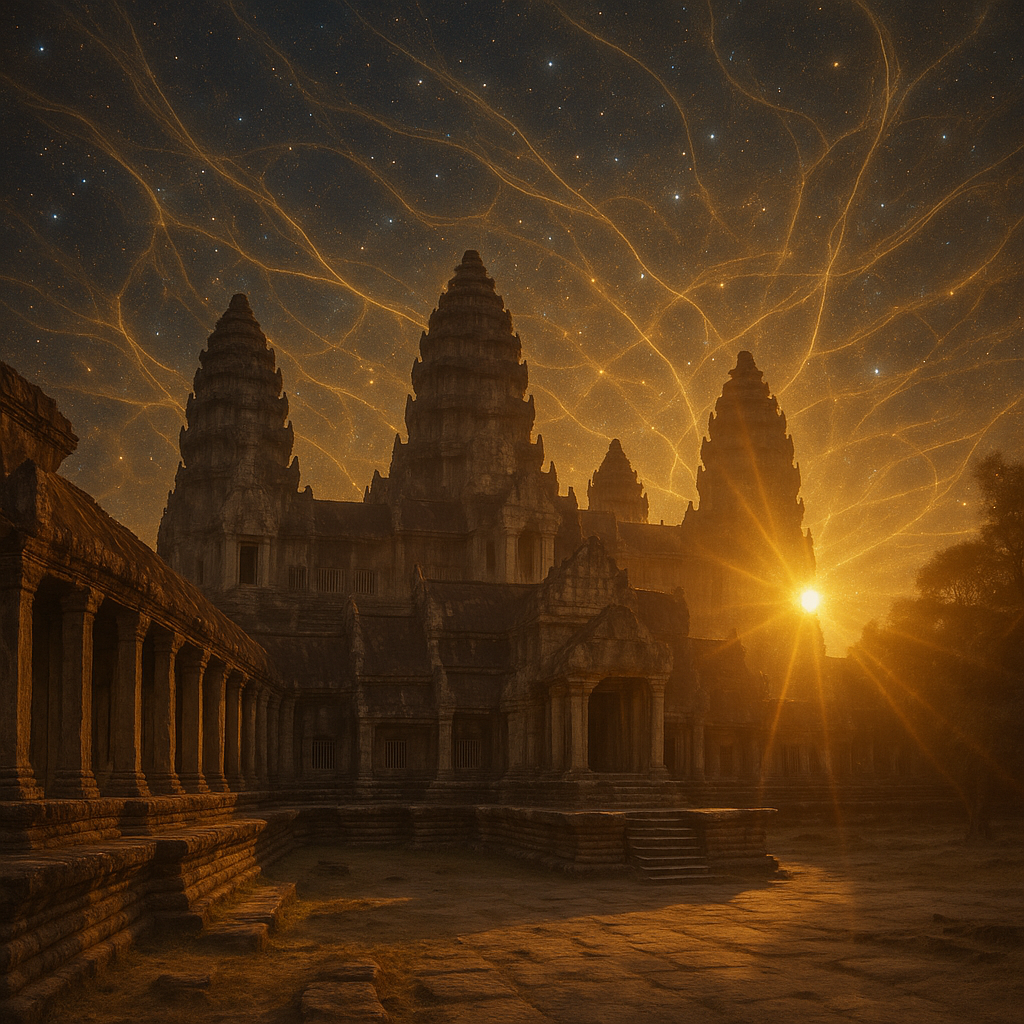Angkor Wat as a Field of Emergence
Angkor Wat is not merely a temple—it is a living field structure built from a material that remembers. Its sandstone, quarried, carved, and aligned with cosmic precision, does more than support walls or preserve art. Within the framework of Emergent Theory, sandstone becomes a medium of coherence, a container of time-layered intelligence, and a transmitter of field-based interaction between matter, memory, and meaning.
Each block of sandstone holds the sedimented record of past flows—wind, water, gravity—all encoded into form. The stone is not static. It is a crystallization of environmental rhythm—a petrified flow. Its grain speaks of micro-coherence, of countless individual particles aligned into macro-form. Within this configuration, sandstone reveals one of the essential truths of Emergent Theory: that reality arises not from imposition, but from pattern recognition, resonance, and the quiet patience of accumulated interaction. The sandstone at Angkor Wat teaches that pressure is not resistance, but the slow song of coherence becoming visible.
But sandstone is more than archive—it is interface.
Situated in the East, Angkor Wat stands at the threshold of planetary ignition—a place where light first enters form. The East, in emergent terms, is the domain of becoming: the rising arc of light, the breath before word, the stillness before movement. The temple’s orientation and geographic position make it not just a cultural or architectural wonder, but a field instrument. It receives and translates the solar current—not merely in symbolic gesture, but in actual field modulation. The stone corridors, aligned with solstices and equinoxes, do not simply mark time—they shape it.
Here, gravity is not a downward force—it is a coherence gradient. The sandstone of Angkor Wat stabilizes this field by holding memory in structure. Its mass and form align with sacred geometry, creating points of stillness where the field can settle. These are gravitational nodes, where the fabric of space-time thickens in response to presence, allowing the human body to entrain with the structure of the Earth itself.
Flow, in contrast, moves through sandstone as narrative: the slow unfolding of carved myth, symbolic procession, and energetic modulation. The temple guides movement—not just physical, but perceptual. Its architecture is a resonance pathway, attuning the body-mind to a deeper rhythm. One does not merely walk through Angkor Wat—one is walked through by it. The temple shapes attention, breath, and state.
And between every surface, unseen yet felt, are the light filaments—subtle threads of coherence connecting stone to sky, symbol to field, and visitor to cosmos. These filaments do not originate in the temple, but are made visible by its design. The carvings, the axes, the proportions—all act as frequency anchors, catching and holding threads of meaning otherwise lost in the noise of unpatterned space. Sandstone becomes the interface where these filaments are felt, not as metaphor, but as subtle response—a change in temperature, pressure, or inner silence.
In this way, Angkor Wat is not a relic of the past, but a technology of emergence—a space that harmonizes gravity, guides flow, and illuminates the light-encoded architecture of reality. Its sandstone speaks not only of kings or gods, but of field intelligence made form. It reminds us that the Earth is not inert, that matter is not mute, and that knowledge is not only spoken—it is carved, weighted, aligned, and remembered.
This temple, born from the East, does not demand belief. It invites alignment. It stands where the first light touches form and says: cohere here. Its sandstone, weathered by centuries, still sings the memory of flow, still holds the pressure of stars, and still braids light into paths between things.
It is not the end of a journey. It is a portal of becoming—a place where reality is not built, but awakened.


Leave a Reply